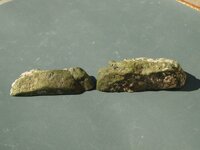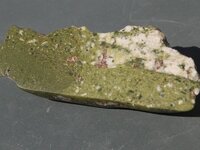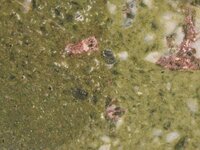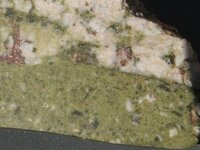Bajahunter
Sr. Member
- Mar 26, 2011
- 265
- 107
I found this last week.
A friend cut it a few days ago (the wrong way). I have spent about 20 minutes polishing the cut side with 100, 600, and 2000 grit sandpaper.
Has a hardness between 4 and 6. Streak is grey, might say grey-green. Very porous. Tiny crystals can be seen with a 14x loupe, in some of the vugs.
Any thoughts?
A friend cut it a few days ago (the wrong way). I have spent about 20 minutes polishing the cut side with 100, 600, and 2000 grit sandpaper.
Has a hardness between 4 and 6. Streak is grey, might say grey-green. Very porous. Tiny crystals can be seen with a 14x loupe, in some of the vugs.
Any thoughts?








